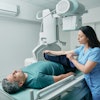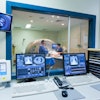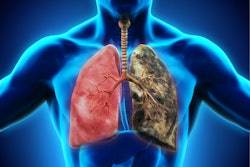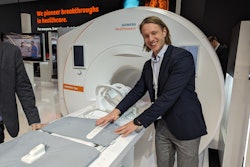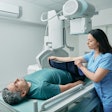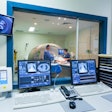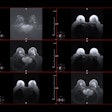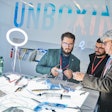Imaging elderly patients presents unique challenges, but radiologists and radiographers can be proactive in making procedures for this population easier, ECR 2024 attendees learned on Wednesday.
In his presentation, Uffe LW Jakobsen from UCL University College in Odense, Denmark, outlined strategies for radiologists to better communicate with elderly patients by treating them like any other patient and forming relationships with them.
“Only then can communicate and conduct an examination where we take the appropriate considerations into account without depriving them of their independence and without compromising image quality,” Jakobsen said.
Medical professionals may fall into a tendency to “talk down” toward elderly patients, a phenomenon called elderspeak. Elderspeak is characterized by slow, clear speech with a higher volume or voice pitch, baby talk, the use of intimate pet names such as “darling” or “sweetheart,” and targeted questions using “we” language.
“This can be perceived as condescending and the feeling of the patient being dependent on others,” Jakobsen said. “This can result in a sense of incompetence and low self-esteem.”
He said that steps radiologists can take include using firm communication and allowing for the patient to act independently, creating an environment for patient autonomy.
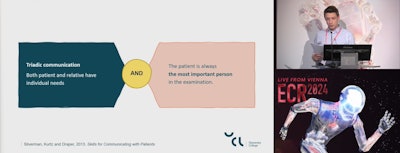 Uffe Jakobsen from UCL University College in Denmark gives a presentation at ECR 2024 explaining how radiologists can better communicate with elderly patients. In this slide, he talks about triadic communication with elderly patients and their accompanying relatives.
Uffe Jakobsen from UCL University College in Denmark gives a presentation at ECR 2024 explaining how radiologists can better communicate with elderly patients. In this slide, he talks about triadic communication with elderly patients and their accompanying relatives.
Still, radiologists should be cognizant of patients’ limitations, which may only be known after the radiologist gets to know the patient better. Limitations that can be prevalent include hearing and vision loss.
Jakobsen said that radiologists can take measures to promote an environment where patients can still have a level of autonomy even with these limitations. He cited steps from the Calgary Cambridge System, a method that provides an integrated method of teaching communication processes.
Steps include making the surrounding physical environment quieter and free of distractions, using a slightly louder or higher voice without overdoing it, and being in the patient’s line of sight when addressing them. If possible, patients can wear their prescription glasses during imaging exams, Jakobsen added.
Also, radiologists can adjust their exam environments to address physical limitations such as reduced muscle mass or arthritis. Doing this can help patients have more confidence in balancing during exams.
“This can lead into a negotiation of common agenda. People in both parties can communicate on how examinations should be conducted, taking both people’s perspectives into account,” Jakobsen said.
He also discussed the concept of weak paternalism, where radiologists and technicians know what’s best for the patient’s health without competing and depriving the patient of their autonomy.
Finally, Jakobsen outlined communication with patients with accompanying people, like their relatives. He said that there are two important things to keep in mind: adding communication as an expression for both the patient and relative to have their individual needs met, and regardless of the relative’s presence, the patient is the most important part of the examination.
“As professionals, we encounter elderly patients,” Jakobsen said. “We should first and foremost be with our patients so we have the opportunity to find out how an individual differs not just from younger patients, but from patients in general.”
For more coverage from ECR 2024, please visit our RADCast.
